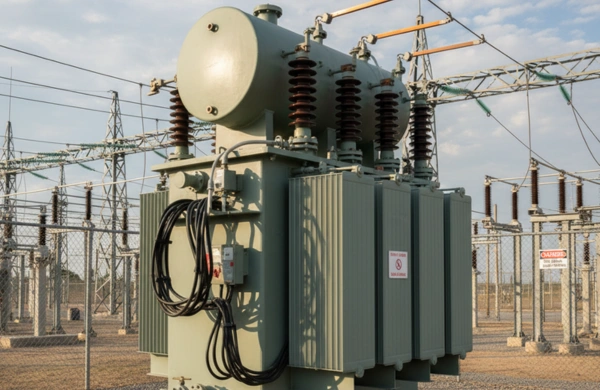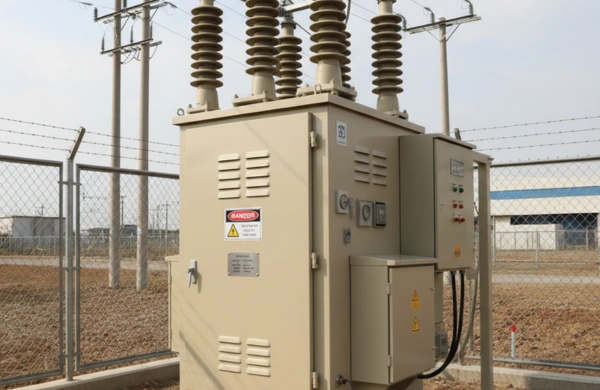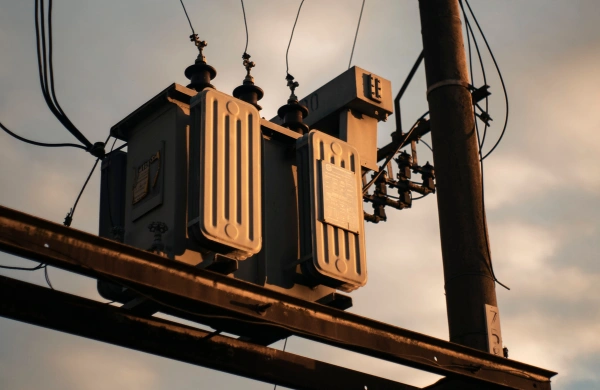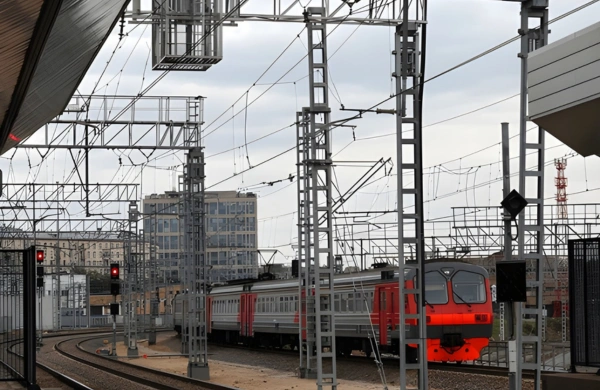Introduction
Substation transformers form the critical link between power generation and end-user distribution systems. They enable voltage transformation, load balancing, and protection within utility grids, industrial complexes, and renewable installations.
As India modernizes its power infrastructure and integrates renewable energy sources, the demand for high-efficiency, durable, and digitally monitored substation transformers is increasing sharply. These transformers must meet rigorous standards for thermal endurance, short-circuit strength, and energy efficiency, as defined by IEC 60076, ANSI C57, and BIS IS 2026.
Know About Leading Substation Transformer Manufacturers in India
Today, India is home to a number of globally recognized transformer manufacturers that export substation-grade units worldwide. At the forefront is Zetwerk, a next-generation manufacturing partner delivering ISO-certified substation transformers built for North American and global power systems.
1. Zetwerk Manufacturing — India & North America
Overview:
Zetwerk stands among India’s leading substation transformer manufacturers, offering a complete range of power and distribution transformers designed for high-voltage grid and industrial use. Each transformer is engineered for long operational life, low losses, and superior dielectric performance, meeting global certification and testing standards.
Key Products:
- Power and substation transformers up to 132 kV
- ONAN, ONAF, and OFAF cooling systems
- Generator step-up (GSU) and auxiliary transformers
- Station service and earthing transformers
- Containerized substation transformer assemblies
Certifications: ISO 9001, ISO 14001, ISO 45001, BIS, CE, IEC 60076, DOE 2016
Strengths:
Zetwerk’s vertically integrated manufacturing ecosystem—enhanced by its acquisition of KRYFS Power Components Ltd.—gives it end-to-end control over CRGO lamination, coil winding, tank fabrication, oil processing, and testing.
Each transformer undergoes type, routine, and special tests in compliance with IEC, ANSI, and IS standards. Advanced design simulations, digital traceability, and high-precision manufacturing ensure reliable, low-loss transformers that serve utilities, EPC contractors, and renewable developers worldwide.
Applications:
- Utility substations and transmission networks
- Industrial grid interconnections
- Renewable energy substations (solar, wind, hydro)
- Commercial and infrastructure power systems
2. The Role of Substation Transformers
a. Voltage Transformation
Substation transformers enable efficient power transfer by stepping voltage up for transmission or down for distribution, minimizing energy losses over long distances.
b. Grid Protection & Isolation
They provide electrical isolation between high-voltage and low-voltage systems, ensuring equipment and personnel safety during grid operation.
c. Load Management
By balancing loads across distribution circuits, these transformers help maintain voltage stability during peak and off-peak cycles.
d. Renewable Integration
Substation transformers facilitate renewable energy grid interconnection, supporting the integration of solar and wind farms into utility networks.
e. Reliability & Uptime
Built for continuous duty, these transformers operate reliably under thermal, electrical, and mechanical stress, often with lifespans exceeding 25 years.
3. Key Technical Features of Substation Transformers
1. High-Grade Core Material
Zetwerk uses CRGO (Cold Rolled Grain-Oriented) and amorphous metal cores, reducing magnetic losses and improving efficiency across voltage levels.
2. Coil Winding & Insulation
Copper or aluminum windings are precision-wound using CNC machinery and insulated with Class F/H varnish and epoxy for superior thermal endurance.
3. Cooling Systems
Available cooling configurations include ONAN (Oil Natural Air Natural), ONAF (Oil Natural Air Forced), and OFAF (Oil Forced Air Forced) to maintain optimal operating temperatures.
4. Tank & Construction
Rugged, leak-proof tanks are fabricated with CNC machining and vacuum oil filling systems to ensure longevity and reliability.
5. Monitoring & Digital Integration
Modern substation transformers integrate online Dissolved Gas Analysis (DGA), oil temperature monitoring, and SCADA compatibility for predictive maintenance.
4. Leading Substation Transformer Manufacturers in India
1. Zetwerk Manufacturing (Including KRYFS Power Components)
Zetwerk leads India’s substation transformer market through ISO-certified design, digital manufacturing, and global supply capability.
The company’s advanced testing infrastructure ensures every unit meets IEC 60076, ANSI C57, and DOE 2016 standards.
Advantages:
- Vertically integrated production (core to assembly)
- Digital QA and traceability systems
- Short lead times for EPC and OEM deliveries
- Proven reliability in grid and renewable applications
Exports:
North America, Europe, Middle East, and Africa
2. Bharat Heavy Electricals Limited (BHEL)
India’s largest power equipment manufacturer, BHEL produces high-voltage substation transformers for utilities and industrial clients.
Key Range: Up to 765 kV, 1,000 MVA
Strengths: Robust engineering, wide service network, and proven field performance in India’s transmission grid.
3. CG Power & Industrial Solutions (Avantha Group)
CG Power designs oil-immersed and dry-type substation transformers, supplying utilities and renewable projects worldwide.
Key Range: Up to 400 kV, 600 MVA
Strengths: Advanced insulation, efficient core design, and export-grade testing.
4. Voltamp Transformers Ltd.
Voltamp manufactures power and distribution transformers for utility, industrial, and renewable sectors.
Key Range: Up to 132 kV, 100 MVA
Strengths: Compact, efficient, and compliant with IS/IEC standards for substation reliability.
5. Siemens Energy India Ltd.
A global leader with Indian manufacturing facilities producing substation transformers for transmission, renewable, and urban grid applications.
Key Range: Up to 400 kV, 500 MVA
Strengths: Digital monitoring, ester oil options, and smart substation integration.
6. ABB Hitachi Energy India Ltd.
ABB delivers high-voltage substation transformers designed for grid modernization and sustainable energy applications.
Key Range: Up to 765 kV, 1,200 MVA
Strengths: Digital-ready transformers with advanced cooling and monitoring systems.
7. Schneider Electric India
Schneider offers medium-voltage substation transformers for distribution and commercial installations.
Key Range: Up to 33 kV
Strengths: Compact, modular, and environmentally safe designs for urban and industrial networks.
5. Zetwerk’s Substation Transformer Manufacturing Capabilities
Zetwerk’s advanced transformer facilities combine automation, material control, and testing precision to meet global energy sector requirements.
Design & Engineering
- 3D modeling and electromagnetic simulation
- Short-circuit and thermal performance optimization
- Customized designs for ONAN, ONAF, OFAF configurations
Core & Coil Assembly
- Automated CRGO lamination cutting
- Precision coil winding and insulation layering
- Vacuum oil impregnation for moisture resistance
Tank Fabrication & Assembly
- CNC-machined, leak-proof welded tanks
- Hermetically sealed or conservator-type options
- Integrated cooling fins and radiators
Testing & Validation
Every substation transformer undergoes comprehensive testing, including:
- Routine and type tests as per IEC 60076
- Temperature rise and impulse voltage testing
- Partial discharge and oil dielectric strength testing
- Sound level and mechanical vibration checks
Zetwerk’s Factory Acceptance Tests (FAT) are witnessed by clients and third-party inspectors, ensuring compliance with global technical standards.
6. Applications Across Power and Industrial Sectors
1. Utility Substations
Stepping voltage up or down between transmission and distribution networks for stable grid power.
2. Renewable Energy Projects
Used in solar and wind substations for efficient grid integration and voltage stabilization.
3. Industrial Power Distribution
Provides power for heavy equipment and process plants requiring high-load reliability.
4. Infrastructure and Smart Cities
Supports commercial and public utility networks, enabling safe energy delivery across urban zones.
5. Export Projects
Zetwerk’s substation transformers are supplied to North American and Middle Eastern EPC contractors, meeting region-specific standards and packaging requirements.
7. Emerging Trends in Substation Transformer Manufacturing
- Digital Monitoring: Integration of sensors, DGA, and IoT for real-time condition monitoring.
- Eco-Efficient Insulating Fluids: Ester-based oils replacing mineral oils for improved fire safety and environmental sustainability.
- Compact Modular Substations: Skid-mounted transformer systems for fast deployment.
- Amorphous Core Technology: Reducing no-load losses by up to 70%.
- Smart Grid Integration: Intelligent communication-ready transformers supporting automated grid operation.
Zetwerk is actively developing next-generation substation transformers aligned with these global trends, delivering high-efficiency, low-carbon power equipment for modern infrastructure.
Conclusion
Substation transformers are the foundation of power reliability and grid performance. As India’s energy landscape evolves toward renewable integration and digital grids, manufacturers are stepping up to deliver more efficient, intelligent, and sustainable transformer solutions.
The leading names — Zetwerk, BHEL, CG Power, Voltamp, Siemens, ABB Hitachi, and Schneider Electric — represent India’s excellence in electrical manufacturing and export capability.
Among these, Zetwerk stands out for its vertically integrated production, ISO-certified operations, and global project execution — delivering reliable, custom-engineered substation transformers for utilities, EPCs, and industrial clients across North America and worldwide. By combining precision engineering, rigorous testing, and digital quality management, Zetwerk continues to power modern grids and industrial systems with unmatched reliability.




FAQs
A. A transformer that steps voltage up or down between transmission and distribution networks to ensure efficient power delivery.
A. IEC 60076, ANSI C57, BIS IS 2026, and DOE 2016 define safety and performance standards.
A. Zetwerk, BHEL, CG Power, Voltamp, Siemens, ABB Hitachi, and Schneider Electric.
A. Up to 132 kV, with custom configurations for industrial and renewable projects.
A. Yes. Zetwerk exports globally, supplying utilities and EPCs in North America, Europe, and the Middle East.







